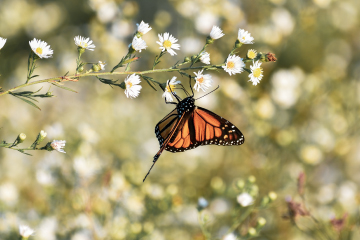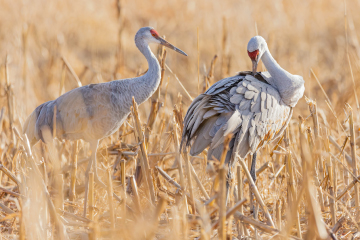The National Wetlands Inventory (NWI) is a program that comprehensively maps wetland footprints and other water bodies throughout the United States. The NWI was initiated in the mid-1970s by the U.S. Fish and Wildlife Service. Today, these data are primarily used to aid in conservation, planning, and research efforts. The most recent maps can be viewed or downloaded online at the Wetlands Mapper website.
In Nebraska, most of the original NWI mapping was based off of aerial photography that was collected in the early 1980s. Updated maps of the Rainwater Basin and Central Platte River regions were completed 10 years ago using aerial photography from 2007. Based on partner interest and Management Board support, an NWI update for the Sandhills region was initiated in 2016 by the Rainwater Basin Joint Venture. In addition to the U.S. Fish and Wildlife Service, Nebraska Game and Parks Commission and the U.S. Forest Service also provided funding and support for this project.
The new Sandhills NWI update is using USDA Farm Service Agency National Agricultural Imagery Program (NAIP) aerial photographs from 2010, with supplemental photographs from 2012 and 2014. The maps are completed by U.S. Geological Survey quads. As the maps are finalized and approved, they are being uploaded in batches. Some have already been uploaded (see below), with more additions planned in October 2021.

Thus far, the updated maps include a much larger number of wetland footprints compared to the original map (see below). This is likely due to the use of higher quality imagery that was captured during a much wetter year. Additionally, modern mapping tools and techniques allow us to identify wetland footprints that were missed in prior efforts. The wetland-dense landscape of the Sandhills is further evidence of the deep commitment to land stewardship by so much of the ranching community in the region.

The increase in the number of wetland footprints that have been identified does not mean that there was necessarily a change in the number of existing wetlands. Additional wetlands were identified because of the improved methods and imagery from a period of time with more rainfall. Water levels in the Sandhills can change a lot from year to year, and are mostly related to changes in groundwater levels in response to recent precipitation. The imagery that was used to create the original NWI map was from a particularly dry year.
It is important to note that NWI maps are not regulatory wetland delineation maps used by the Environmental Protection Agency or Army Corps of Engineers, nor are they wetland determination maps used by the USDA. As is stated on the NWI website “there is no attempt, in either the design or products of this inventory, to define the limits of proprietary jurisdiction of any Federal, state, or local government or to establish the geographical scope of the regulatory programs of government agencies”.
The maps will primarily be used to provide an updated and consistent base data layer for planning. Examples include modeling wildlife distributions, designing research projects, and planning for restoration projects. Specifically, we plan to use the updated data to help better map the movement paths of invasive common carp and develop Sandhills lake renovation projects.
If you have any questions about this project or want to learn more, visit https://www.fws.gov/wetlands/



